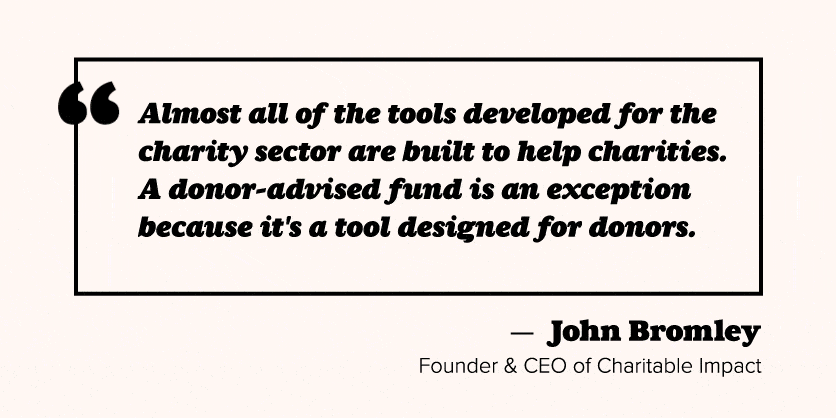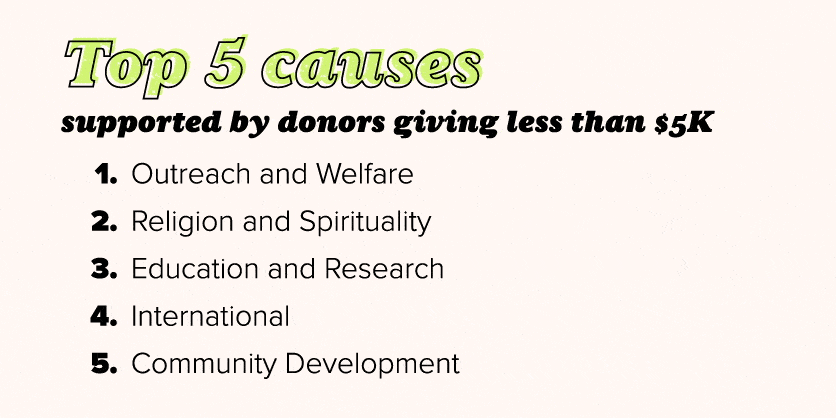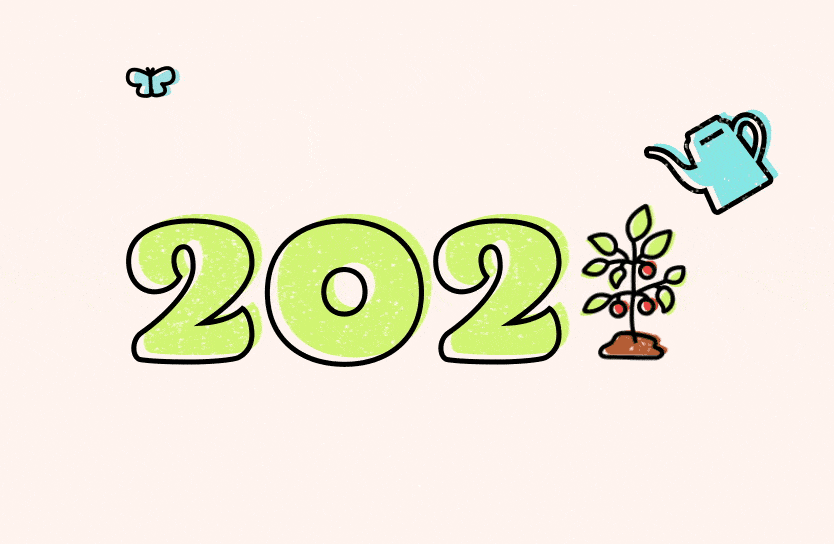2021 in review: Generosity grows on Charitable Impact
January 28, 2022
15 min read
We have cause to celebrate and to be grateful to donors—like you—seeking to make a difference.
As we continue in 2022, we are excited to see generosity growing. Donors gave more on Charitable Impact in 2021 compared to 2020. And they gave to a broad range of causes, reflective of their interests in their communities, neighbourhoods, and families.
We saw more than $92 million allocated to charities, a 21% increase over 2020. Among donors who gave $5K or less, $1 million more was given to charities compared with 2020. Among donors giving less than $1K, $200K more was given to charity this year.
These increases build on previous growth seen in 2020 when there was a 179% increase in the total amount of money given to charities compared to 2019. In 2021, we also saw a 131% increase in the number of disbursements to charity compared to 2020.
Donors on Charitable Impact were engaged in contributing to the charitable sector: the overall disbursement of net assets to charity during the fiscal year of 2021 (from July 2020 to August 2021) was 29.97%. This is markedly higher than the 3.5% disbursement quota mandated this year by the Canada Revenue Agency (CRA), or “the minimum calculated amount that a registered charity is required to spend each year on its own charitable programs or on gifts to qualified donees, such as other registered charities.”
To add, we welcomed nearly 13K new donors to our giving community. Charitable Impact is a public foundation operating as a donor-advised fund. Donors can add money to their Impact Accounts, then take the time and space to decide how to give.
The donor-advised fund as an effective giving vehicle
We are enormously humbled by the generosity demonstrated on our platform. But, because we believe everyone has something to give, we are not entirely surprised. Our aim is to make giving a more meaningful, intentional, and even seamless part of donors’ lives by providing access to a tool particularly suited to their needs.
Our data on generosity marks a positive contrast to trends in declining giving evidenced by recent tax filing information in Canada and highlighted in a report by the Fraser Institute. In addition, Imagine Canada has predicted a $25 billion dollar shortfall of social spending due to decreased donations, expected by 2026 if current trends continue.
Donors who give more regularly are more likely to show resilience when the going gets tough. A 2020 Angus Reid poll, in partnership with Charitable Impact and other organizations, found that the most consistent donors chose to give the same amount of money to charity during a challenging year.
The donor-advised fund can be a tool for proactively planning regular giving. Charitable giving can potentially become more sustainable than giving more reactively, like only when you are asked and only according to the giving methods available through individual charitable organizations.
“Almost all of the tools developed for the charity sector are built to help charities. A donor-advised fund is an exception because it’s a tool designed for donors,” said John Bromley, Founder and CEO of Charitable Impact. “As the donor-advised fund continues to help people better manage and track how they approach charitable giving, I’m excited to see the impact on increasing engagement with and the joy derived from charitable giving. I expect the donor-advised fund to increase access to, participation in, and reward from charitable giving.”

Individual donors gave more
Charitable Impact’s annual giving sums are created by the combined contributions by everyday donors from across Canada who give $5, $500, or $5 million or more to their Impact Accounts. Donors can choose to donate cash or the value of non-cash assets to fund their giving.
In 2021, we saw an increase in distribution to charities on an individual basis. The average donor who gave up to $5K in 2021 allocated about $350 to charity last year, up from about $330 the previous year. In the under $1K range, the average allocation to charity remained around $134.
The increased deposits and allocations on our platform echo similar surges we noticed during Giving Season in 2021, two weeks in the months of November and December that are typically our busiest times.
During that period in 2021 (November 30th to December 15th), the amount of money added to Impact Accounts jumped significantly. The average gift was $327 in 2021, compared with $178 during the same time period in 2020. Donors also allocated 3.5 times more to charity than during the same time last year.
These stats are reflective of some larger year-over-year trends in the charitable sector. Online giving continues to gain in popularity, even as some are stepping away or unable to contribute in other forms such as through in-person fundraisers or volunteering. As the economy grows, donations amounts tend to increase. Increased giving is also tied to growth in national GDP and market indicators, such as the S&P 500.
A tool for giving—available to everyone
A donor-advised fund like Charitable Impact provides increased flexibility and forethought in giving. Giving through these financial and philanthropic vehicles continues to gain traction in North America. In the U.S., nearly $35 billion went to charities from donor-advised funds in 2020. In Canada, the value within donor-advised funds is expected to reach $10 billion by 2026.
Through a donor-advised fund, like Charitable Impact, you can separate decisions about how much to give to charity from choices on where and how to give.
DAFs provide other benefits, such as:
- The ability for donors to build giving strategies, along with options to invest in giving and give through non-cash assets. On Charitable Impact, donors—like you—have the option to give publicly and privately traded securities, real estate, cryptocurrency, and art.
- Resilience towards generosity that can sustain. You can add money towards future giving, providing a steady practice of generosity and a means of saving for a rainy day. This could be when a friend asks, when you see a need in your own community or the world, or when you feel driven or inspired to make a change.
- Greater flexibility in giving and making an impact. Some donors may choose to fund causes in the future, anticipating later developments that will affect their giving decisions. For example, this could be the case if a donor wanted to give to support environmental sustainability and is awaiting the implementation of greener technology.
- Adaptable giving legacies that can include families. You can choose to pass charitable dollars along to loved ones, or you can decide which charity to dedicate your legacy to without needing to update your will.
Through an Impact Account, you are able to send charitable dollars directly to friends and loved ones. You can give together with others in Giving Groups, rallying around a cause and providing a space to communicate as a collective of donors.
We took a look at how donors decided to use their charitable dollars in 2021.
Most donors opted to give with others
Interestingly, the majority of donors giving up to $5K last year found solidarity in acting generously and chose to support Giving Groups that empower people to give together. Funds raised through Giving Groups are committed to be allocated to one or several registered charities, as chosen by the administrator or members of the group.
Anyone can start a Giving Group and they can be used as tools for charities to rally supporters around a specific event or campaign. As opposed to a typical crowdfunding platform, donors can choose where to allocate their giving at any time.
Donors allocated directly to individual charities or qualified donees an amount representing about half of the amount allocated to Giving Groups. Many donors also opted to gift charitable dollars to fund their friends’, colleagues’, loved ones’, and others’ visions of a brighter future.
A donor-advised fund allows you the option to engage others in giving by sending charitable dollars. This feature could be used to schedule gifts to family and friends, to share generosity with others in your community, or to start charitable allowances for younger family members.
Most donors disbursed to a small number of charities, with some notable exceptions
The number of charities donors supported increased 10% in 2021 compared to 2020. Most donors give to one or two charities on our platform, with about 25% of donors giving to two or more charities in 2021.
But a few exceptions (could we call them the break-out stars?) gave to 50, 60, or even 70 charities last year. On Charitable Impact, you can give to any of the more than 86K Canadian registered charities.
Do you have one or two tried and true charities you choose to support each year? Do you typically give to charities that reach out to you for support? Are you looking to discover new organizations according to your own values and interests?
You can start to decide your giving strategy by asking yourself how much you would like to give and how much you would like to dedicate per organization.
Giving to charities big and small
Donor-advised funds are particularly equipped to process complex donations that smaller charities may not have the capacity to receive, such as non-cash assets like securities or cryptocurrency. Smaller charities are often running with very few staff and resources, and may not have access to the same fundraising and donation processing tools as larger organizations. On Charitable Impact, all registered charities and qualified donees are able to personalize their own Charity Profile pages to inform donors about their missions, values, and activities.
About 80% of charities in Canada operate on annual revenue of less than 200K. These charities receive a disproportionately low amount of funding—at just about one quarter of total donations, according to some estimates. Many donors supported small charities on our platform in 2021, but at a reduced rate than in 2020. In 2021, about 20% of donations went to charities operating on annual budgets of less than $200K, compared with about 23% of donations in 2020.
The lowest portion (or about 14%) of allocations to charity on our platform last year went to medium-sized organizations. These are categorized as operating with annual budgets of more than $200K but under $1 million. This is compared to nearly 27% of donations that went to such charities in 2020.
In 2021, about 66% of donations went to large charities that are operating with budgets of over $1 million.
Outreach and Welfare top list of popular causes
By looking at the nature of their work and impacts, our Research Team has labelled charities according to causes and over 200 more specific topics.
The top 5 causes supported among donors giving up to $5K saw Outreach and Welfare in the lead at 22% of total donations, Religion and Spirituality at 17%, Education and Research at 13%, International at 11%, and Community at 10%. Causes such as Environment and Health surfaced in the top 5 causes last year, but these were replaced by organizations concerned with religion or international causes.

We also looked at giving on specific topics, diligently categorized according to more specific definitions of the work of charities. The top topics supported among donors giving less than $5K were:
- Church
- Christian
- Child
- Faith
- Family
- Counselling
- Housing
- Women
- Performing arts
- Material assistance
According to the most popular causes and topics, donors were interested in supporting mental health, social, and economic needs, which may have been exacerbated by the COVID-19 pandemic. For example, material assistance can include food banks, as well as clothing and other material supports. Donors also supported causes such as music, language, low-income, and seniors within the top 20 list.
Donors seeking out solutions to urgent issues
We noticed a gap between searches on our platform and giving. This may indicate increasing interest in causes that are not yet seeing the same amount of charitable donations from individuals.
Animals and environment top the list of most-searched-for topics. However, these are typically not garnering the most in donations on our own platform or according to Canadian-wide statistics. Research from Imagine Canada shows donors give much less to support the environment, with most opting to support instead religion, health, social services, international, and hospitals.
“Donors can use Charitable Impact to explore their interests in giving and have access to features beyond giving to charities. While charities related to animals and the environment are not receiving the lion’s share of donations, these seem to be top-of-mind topics for donors as we confront urgent ecological crises. It’s encouraging to see donors coming to our platform seeking out ways to contribute towards solutions,” said Lise Owens, Senior Research Strategist at Charitable Impact.

The top causes searched for on our platform:
- Animals
- Environment
- Youth & Children
- Education
- Health
- Religion
- Research
- International
- Sports
- Human rights
The top topics searched for on our platform were somewhat more in line with patterns and trends in giving. In 2021, search terms related to “food bank” and “mental health” were among the most searched-for. Food banks and some mental health services are included in the cause label “Outreach and Welfare”, which ranked at the top of the list for donations allocated.
Donors were also searching for topics related to racialized communities, women, and LGBTQ. The term “Black Lives Matter” remained on the list of most searched topics this year after being the most searched term in 2020, a year marked by international protests against racial injustice.
The top topics searched for on our platform:
- Food bank
- Mental health
- Indigenous
- Cancer
- Refugees
- Pink Shirt
- Women
- LGBTQ
- Scholarships
- Black Lives Matter
Meeting donors where they are
Charitable Impact’s in-house Research Team observes trends and behaviours in donors on our platform and across Canada. This helps us to better tailor our features and services to meet the needs of donors.
“Our research helps to better understand how donors behave and how they react to situations around them. Understanding donors’ motivations enables meeting them where they are and addressing their needs. Charitable Impact can be designed as a place for donors to create their own unique giving journeys,” said Ernesto Peña, Director of Research at Charitable Impact.
On Charitable Impact, you can add money to a free Impact Account, receive an immediate tax receipt, and then take the time and space to decide where to give. Access information about individual charities based on data provided to the Canada Revenue Agency.
“Donor-advised funds enable donors to separate their decisions about how much money to donate each year from their choices on how to create impact—for example, which causes or charities to support. Taking time and space to focus on the many aspects and options involved in funding charities helps donors become more intentional, strategic, and confident. Ultimately, donors become more engaged in their giving journeys,” said Bromley.
We are grateful and extend our thanks to all the donors—like you—who gave through Charitable Impact in 2021. It’s humbling to see your generosity in action, which brings energy to what we do. Reach out to us anytime at [email protected] with any questions about giving. We look forward to sharing more on the impressive results of your generosity in 2022.

